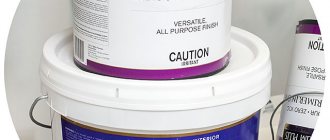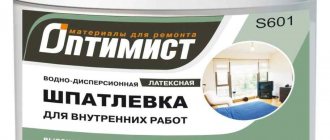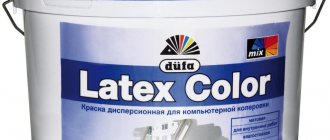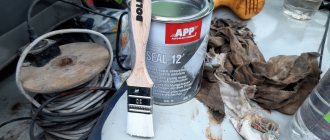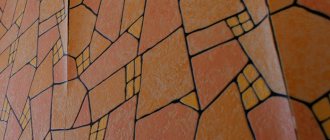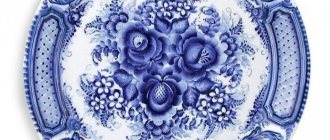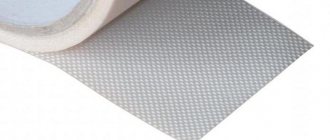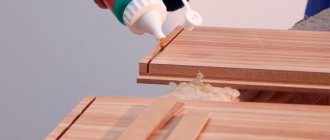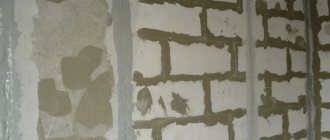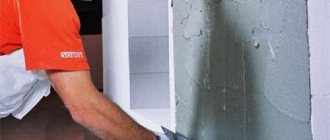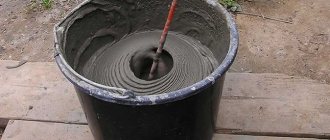Polystyrene is an excellent material that is a filler and serves to lighten the mass of the blocks to which it is added. This type of material has been used for several decades. However, in addition to its many advantages, there are also disadvantages.
The main ones include a surface on which a regular layer of plaster does not hold. Immediately after contact, it cannot gain a foothold and begins to slide and collapse. The article will describe in detail how to plaster walls made of polystyrene concrete blocks and the technology of applying mortar for interior and exterior decoration.
Areas of application of expanded polystyrene concrete
Polystyrene concrete building blocks for rough masonry vary in size and purpose.
Composite material is used for the manufacture of such masonry and finishing materials;
- ordinary building blocks;
- masonry blocks with a molded (decorative) front side;
- reinforced (reinforced) building products;
- thermal insulation boards;
- finishing panels for facade cladding.
Polystyrene concrete building blocks for rough masonry vary in size and purpose. The building material for the construction of the main walls is made with a density of 500-600 kg/m3 and block sizes of 300x380x588 and 188x300x588. Products for laying internal partitions can have a lower density (from 400 kg/m3) with dimensions of 92x300x588.
Blocks for finishing masonry of an external wall with a textured (decorative) front surface have a density of at least 500 kg/m3 and standard dimensions. With the help of such masonry blocks, a finished facade surface is formed that does not require further finishing. The photo shows a sample of finished masonry made from this building material.
Blocks for finishing masonry of an external wall with a textured (decorative) front surface
Door and window beams, which are produced in lengths of 1.3-4.2 m, are reinforced with steel rods. They simultaneously perform the functions of structural reinforcement and thermal insulation.
Another type of products that are produced on the basis of composite material are panels for external wall cladding. Decorative slabs are available in two versions. Some of them are designed for sheathing walls (ventilated facade), others are designed for installation directly on the surface using mounting adhesive.
Plastering interior walls. Stages of work
Stage 1
Before starting work on plastering walls made of polystyrene concrete blocks, the room is completely cleared of construction debris to prevent dispersions from getting into the mixture and further formation of cracks during drying.
The cracks and chips are leveled using a regular repair mortar. For a small amount of work, it is better to use special glue.
Stage 2
To ensure strong adhesion of the plaster, the wall made of polystyrene foam concrete blocks is carefully primed without dry gaps. A special glue is applied to the dried surface, and a plastic mesh that is resistant to alkaline influences is installed.
Stage 3
Fastening beacons with a step equal to the width of the rule.
Stage 4
Between the four beacons, a composition with a thickness of at least 8 mm is applied from bottom to top. Before the finishing layer has hardened, the surface is quickly leveled using the rule. To check the quality of work, apply the rule to the wall: if there are gaps, level this part with mortar.
The plaster is applied using a trowel or trowel, rubbed with a trowel, and tightened between the guides using a rule. Excess mixture is removed with a grater.
Stage 5
The beacons are removed, the wall is leveled with a spatula. The next section is processed in the same sequence.
Plastering walls made of building blocks must take into account the temperature conditions for the selected composition. Upon completion of the work, they begin decorative finishing: painting, gluing wallpaper, applying decorative plaster.
Errors
The main mistake that many novice finishers encounter is the incorrectly selected composition for applying a layer of plaster. The wall has many nuances with such blocks, so it is worth taking these features into account when making calculations.
The selected mixtures must be mixed and mowed according to strictly specified proportions, otherwise there is a high probability that at the end of the season such plaster will begin to deteriorate and fall off. It is also not worth making the mixture yourself without knowledge and experience. This can only aggravate the situation and within a few years the plaster will lose its original appearance and completely collapse.
Features of plaster
One of the main features of plastering walls is a properly formulated solution. It is worth paying attention to the fact that it is better to use ready-made dry mixtures that are supplied packaged. Before purchasing, you need to decide on the wall area to be covered.
On the bag itself with the dry mixture for mixing plaster, the mass and consumption per square meter are indicated. It is important to maintain proportions in the ratio of water. If this is not done, there is a possibility that the mass will turn out to be too liquid. This will lead to the mixture not adhering to the surface, which is already too slippery for reinforcement.
It is also worth paying attention to the method of application. Many people use spatulas. Manual application is considered more accurate, but longer. Experts advise using special machines to spray the composition on the wall. With their help. They apply a layer evenly on the outside or inside of the wall.
Subtleties of construction
You can build a residential building from expanded polystyrene concrete with your own hands quite quickly. If necessary, blocks of concrete and polystyrene can be made independently at home, following the manufacturing technology.
- Preparing the foundation. For buildings made of polystyrene concrete, a strip foundation is made, the bottom of which is covered with sand and gravel. For a structure of this type, the foundation height is chosen to be 70 cm.
- Construction of walls and roof. To strengthen the walls, a mesh of metal reinforcement is used. The blocks are installed with a seam size of no more than 0.8 cm. The blocks are fastened with an adhesive composition or masonry mortar. When the walls are ready, metal channel ceilings are installed and the roof frame is assembled. Waterproof plywood sheets are fixed to the frame and bitumen shingles are laid.
- Installation of insulation and finishing. After the walls are erected, they can be covered with insulation and the outside can be decorated with protective decorative finishing. Inside the building, the wall surfaces are finished with a thick layer of plaster. Outside, red hollow brick can be used as additional sound and heat insulation. For the ceiling during construction, ready-made large-sized blocks with thermal insulation characteristics are used.
You can build a house from polystyrene concrete in a few months, and its performance properties will be used for many decades.
Pros and cons of polystyrene concrete blocks
Despite the fact that polystyrene concrete blocks began to be used in construction relatively recently, the main advantages and disadvantages of this material can already be identified. The undeniable advantages include:
Important! Minimum thermal conductivity is characteristic of a polystyrene concrete block with a minimum specific gravity. As the density of the material increases, thermal conductivity increases
- High sound insulation properties
. In this indicator, polystyrene concrete blocks are also superior to brick, wood and other lightweight concrete. Sound insulation capacity is about 70 dB. - Economical
. The economic effect of blocks consists of several components. First of all, this is the affordable price of the material. In addition, low thermal conductivity allows you to save money on additional thermal insulation and reduce the thickness of the walls. - Ease.
The low weight of polystyrene concrete blocks significantly speeds up construction work and simplifies transportation. In addition, such buildings do not require a massive, expensive foundation. - Environmental safety
. The blocks contain predominantly natural ingredients that do not pose a danger to humans and the environment. As for polystyrene granules, oxidation of the polymer is possible at a temperature of at least +110C. This temperature can only occur in the event of a fire. - Minor shrinkage
. For dense brands of polystyrene concrete, this figure is 0.7 mm per 1 m. This is more than for natural stone and heavy concrete, but less than for wood and cellular types of concrete. - Biological resistance
. The material is immune to biological influences. Moss does not grow on the surface, mold and other fungal colonies do not form. Polystyrene concrete blocks do not attract insects and rodents. - Hygroscopicity
. Water absorption by weight is no more than 8%, while for brick this figure ranges from 12 to 15%, and for gas and foam concrete more than 14%. - Frost resistance
. In accordance with GOST requirements, various grades of polystyrene concrete can withstand from 35 to 300 freeze-thaw cycles. - Ease of machining
. No special tools are required to process the material. Polystyrene concrete is easy to cut and drill. If necessary, the blocks can be given any configuration.
The disadvantages of polystyrene concrete blocks include the following:
- Due to the loose structure of the material, installing dowels and anchors causes serious problems. It is recommended to install fasteners in cavities filled with M150 concrete, choosing the maximum length of hardware;
- When installing windows and doors, it is necessary to strengthen the door and window openings. The loose structure of the building material does not allow window frames and door frames to be attached directly to polystyrene concrete. The situation is further complicated by the fact that currently no unified reinforcement technology has been developed;
- insufficient vapor permeability. Polystyrene concrete requires effective exhaust ventilation. Otherwise, there is increased humidity in the room, the risk of mold, fungi and a general deterioration of the microclimate increases;
- the ability to intensively absorb water vapor negatively affects the frost resistance of the material. In addition, excessive moisture saturation can lead to deformation of the blocks. This may result in cracks, peeling of the plaster, etc.
It should also be noted that most of the disadvantages of polystyrene concrete are aggravated if:
- manufacturing technology is not followed or masonry work is performed incorrectly;
- the material is not used for its intended purpose. For example, instead of structural-thermal-insulating blocks, thermal-insulating-structural or thermal-insulating blocks are used;
- Specific climatic or soil characteristics are not taken into account.
Interior decoration
Plastering polystyrene concrete blocks requires the right approach and implementation of all actions. Simply applying the composition without a reinforcing layer in the form of a mesh is not worth it, as this can lead to rapid shedding of the applied solution.
It is strongly not recommended to apply plaster in a room with a large amount of construction waste and waste. The dispersion that gets into the composition violates its integrity. Once the plaster dries, this can lead to cracks.
For these purposes, a special fine mesh is used. It is applied over the entire wall area. This mesh provides increased rigidity of the applied composition and prevents it from quickly moving away from the smooth coating of the blocks.
The complete algorithm will look like this:
- First install all the necessary electronic and ventilation communications along the walls. They are mostly of the hidden type. A layer of acrylic or mineral plaster will hide the excavated channels and cables laid along the wall.
- Since this will be an almost final finishing of the interior, it is necessary to completely complete all repair and construction work before applying the solution. It is important to clean the walls from dirt and let them dry. The floor and ceiling also need to be cleaned. So that dirt does not get on the kneaded and applied mass, which can disrupt the integrity of the mass when it is distributed among the blocks.
- It is necessary to make sure that all seams between stacked blocks in the wall are well and tightly sealed. After cleaning, the irregularities and protrusions should be leveled with a common plane, rubbing them with a grinding machine. It is also advisable to level out depressions and chips using cement mortar so that the wall has a continuous surface without irregularities and depressions.
- Next, you need to coat the interior walls with a special primer solution. It creates a film of their substances, which does not allow steam to pass through during work. This will make it possible to apply the solution without problems.
- If this decorative plastering is necessary, as mentioned above, a special reinforcing fine-mesh plastic mesh should be installed. It is quite flexible and at the same time durable. In the indicated direction, it makes it possible to give the wall the required shape of protrusions and bends.
A layer of mineral or acrylic plaster is applied with a small trowel. The thickness of such a layer should not be more than 20 millimeters. After applying the mass to one point, it is evenly distributed over the area. Then, as soon as the mass sets and dries, all irregularities and roughness are removed. For this, half graters are used.
Construction Materials
To build a Swedish stove with your own hands, not counting the construction of the pipe, you will need materials and stove fittings in the following quantities:
| No. | Name of materials and fittings | Unit measurements | Quantity |
| 1 | Red kiln brick | Thousand PC. | 0,92 |
| 2 | Fireclay brick | PC. | 215 |
| 3 | Sand | kg | 200 |
| 4 | Oily clay | kg | 250 |
| 5 | Fireclay mortar | kg | 160 |
| 4 | Blower door 14x25 cm | PC. | 1 |
| 6 | Fire door 21x25 cm | PC. | 1 |
| 7 | Cleaning door 7x13 cm | PC. | 3 |
| 8 | Valve for smoke duct 13x26 cm | PC. | 2 |
| 9 | Cooking plate 31x61 cm | PC. | 1 |
| 10 | Grate 25x40 cm | PC. | 1 |
| 11 | Steel strip 50x5 mm | m | 5 |
| 12 | Angle steel 60x60x5 mm | m | 0,8 |
| 13 | Sheet steel 50x70 cm | m² | 0,35 |
Types of plastic blocks
Polystyrene concrete products are divided into the following types:
- thermal insulation. They are characterized by reduced specific gravity and reduced thermal conductivity. Unable to bear significant loads;
- structural. A distinctive feature of structural blocks is increased density and increased thermal conductivity. In demand for the construction of capital walls;
- structural and thermal insulation. They are used in the field of low-rise construction. They combine the properties of thermal insulation and structural products.
Products differ in design features depending on the specific application:
- partition elements are used to divide the room into functional zones;
- ventilation products have spilled cavities used for laying utility networks and ventilation ducts;
- facing products are a sandwich made of polystyrene concrete block and decorative finishing;
- lintels reinforced with reinforcement are indispensable when arranging openings for various purposes.
Plastic blocks also differ in overall dimensions.
Various types of products allow them to be used for finishing and other types of work
Exterior decoration
The finishing of the external part of walls made of polystyrene concrete blocks will be slightly different. It is important to consider the region where such a house is located. In warmer areas, insulation or insulation materials are generally not used before applying the coating.
Simply place the grate, after which the prepared solution is applied to it. This type of plaster can also be decorative; it is often used as a material for exterior home decoration. Plaster painted in the desired color will go well with decorative stone and other types of finishing materials.
When applying plaster, it must be borne in mind that it must be more vapor permeable than the wall. Otherwise, it will begin to crumble quickly.
Here it is necessary to take into account temperature differences and humidity levels. If it is high enough, it is necessary to coat such solutions with a special composition. Otherwise, the applied plaster may begin to crumble after 1-2 seasons.
Here it is better to immediately use acrylic plaster. It has such an important quality as water resistance. It will retain its original appearance for many seasons and will not crumble due to high humidity in the off-season and rainy season.
Plastering polystyrene concrete blocks
When finishing polystyrene concrete blocks, there are often no nuances or difficulties, but you need to know a few basic rules that should be followed when plastering walls:
- Polystyrene concrete has good adhesive properties, so the surface of the blocks will practically not absorb moisture from the plaster. The drying speed will be slightly higher than in the case of brick and aerated concrete.
- In order to plaster polystyrene concrete blocks with high quality, you need to use mixtures of a special elastic composition that could adapt to temperature fluctuations. This is due to the fact that polystyrene concrete is subject to linear expansion.
- In order for the mixture to spread as evenly as possible, it is applied to a previously wetted surface. This is the only way the plaster will not slide off the walls.
- For more effective attachment, plaster, both external and internal, must be reinforced. What are metal and nylon meshes used for?
Selection of material for plaster
Plastering walls made of polystyrene concrete is quite difficult. Gas silicate ones have poor contact with the binder, which is in a regular solution. As a result, this leads to the destruction of the coating layer and its complete crumbling.
Plastering such walls should also not be ignored. Although the material of the blocks is quite durable, it is damaged by sudden temperature changes, prolonged exposure to ultraviolet radiation, and moisture. A correctly selected solution and the technology for its application will protect the walls for a long time and protect them from premature destruction.
Basically, builders distinguish the following types of mixtures, which can reliably protect walls from negative influences:
- Acrylic.
- Mineral.
Each of them contains a unique composition of chemical and natural substances that allow them to be reliably fixed during application and prevent external and internal influences from destroying the formed layer. Such compositions have special properties and have many differences with standard types of plasters.
Acrylic plaster
For plastering walls made of polystyrene concrete blocks, this composition will be effective. The active formula of the binder is based on an aqueous dispersion of acrylic resin. In addition, plasticizers and modifiers can be added to binders.
However, this type of plaster has negative aspects. The first is its non-prevalence. This is still a new product on the market, which has a high cost. In addition, tatka type of coating is distinguished by the fact that it absorbs dust and dirt. Therefore, it must be washed with special detergents.
If we consider the advantages of acrylic plaster, we can highlight the following:
- easy application to walls;
- has high elasticity, which allows the solution to stretch perfectly, which reduces the risk of cracks;
- high resistance to mechanical loads;
- the binder is securely attached to the coating and does not peel off over time;
- has a vapor-permeable effect;
- service life is 2-3 times longer than that of mineral compounds.
This type of plaster can be used both as a reinforcing and decorative layer. It contains durable granular filler. It allows you to create a relief appearance when applying and grouting a layer of plaster.
This composition can be used as a decorative layer for the exterior decoration of a building. It paints well and matches other elements of façade decor.
It is applied only using a fiberglass mesh, which will come with a reinforcing layer when coating. It must first be fixed to the wall, and only then begin to cover the marked area with acrylic plaster.
Mineral plaster
Mineral types of coatings can also be used for plastering polystyrene concrete. Unlike the mixtures described above, they have a less effective binder layer. However, such a composition will stick much more reliably than a solution prepared with your own hands.
The main composition of the binder includes a large percentage of white Portland cement. Substances such as lime hydrates with mineral fillers are also used as additional additives.
A common question among users is the proportions for applying this type of plaster to walls. To do this, before purchasing, you need to calculate the area of the wall surface to be treated. Each package indicates the consumption based on the mass of the substance per square meter.
The main disadvantage of such a solution is its fragility. The maximum service life of the coating is 10 years. Over the course of its service life, chips and cracks will be filled. Although the binding solution fits tightly on the wall, it will not be able to withstand strong mechanical loads.
The positive properties of the solution include the following:
- Resistance to severe frosts. The solution is able to withstand sudden temperature changes.
- Not damaged by moisture.
- Vapor permeability ensures a normal indoor climate.
- Quick bonding of the binder to the wall surface.
Additionally, we can highlight the relatively low cost compared to acrylic types of plasters. As the builders note. The solution is environmentally friendly and is perfect for interior decoration. The material is low maintenance and can be cleaned with any type of solution.
Characteristics
Polystyrene concrete is a relatively new building material (it appeared on the construction market about ten years ago). New technologies make it possible to improve products made from this material, which expands the scope of application of polystyrene concrete mixtures. It is used to make blocks, slabs, etc. Polystyrene concrete blocks are rectangular in shape and impressive in size. These features simplify construction work. Plastic blocks have other characteristics, including:
- frost resistance;
- low degree of thermal conductivity;
- reliability;
- environmental safety;
- soundproofing.
Application of polystyrene concrete
GOST 22929-2016 regulates the production of polystyrene concrete grades D150-D600. A three-digit number is the average density in kg/m3.
On sale you can find brands D800–D1200. Based on the experience of neighboring countries, many practicing builders consider lightweight PSB to be a promising analogue to expanded clay concrete. Density up to 1400 kg/m3 does not contradict GOST 27005 - 2014, but the properties of such PSB are largely up to the manufacturer.
The correspondence of brand, strength and scope of application is presented in the table:
| Brand by density | Scope of application |
| Thermal insulation (D150 – D225, M2–M5) | Thermal insulation of load-bearing walls, blocks and panels, building frame, floors, attic floors and roofing. |
| Thermal insulation and structural (D250 – D350, B0.5–B1, M7–M15) | Non-load-bearing filler of thermally efficient walls, non-load-bearing and self-supporting monolithic walls, solid blocks. Decorative cladding panels for facades, thermal insulation of wells, ventilation, chimneys. |
| Structural and thermal insulation (D400 – D600, B1.5–B2.5, M20–M35) | Internal partitions, reinforced lintels for doorways, blocks or monolith for non-load-bearing, self-supporting and load-bearing walls. |
The range of finished products made of polystyrene concrete includes:
Masonry (wall) blocks of different brands. The size range is wide - you can choose convenient dimensions for any project.
Partition structural and thermal insulation blocks are distinguished from masonry blocks only by their shape: running dimensions 92*300*588 and 135*300*588.
Reinforced floor slabs 30 cm thick, 110–150 cm wide, 3 to 6 m long. The slabs are installed as interfloor, attic, end floors, external and end load-bearing walls.
Reinforced concrete lintels for window and door openings are of different heights and lengths, the dimensions are chosen taking into account the size of the masonry blocks.
Thermal insulation boards for facades, floors, warm suspended ceilings, cladding of concrete columns. It is enough to plaster or prime the slab and protect it with paint.
Tongue and tongue blocks. The exact dimensions and shape allow the construction of external walls without additional insulation from the outside - the house turns out to be large-panel, but without “cracks”.
Other characteristics of polystyrene concrete depend on the brand in terms of density; below is a table of properties based on GOST-33929–16 “Polystyrene concrete. Technical conditions".
Briefly about polystyrene concrete: composition and properties of the material
To successfully start production, in addition to organizational issues, you must first become familiar with the characteristics of the material and the composition of the raw materials. Agree, it would be stupid to release something you know nothing about.
Structure of polystyrene concreteSo, polystyrene concrete is a representative of lightweight concrete. It is distinguished by the presence of polystyrene and concrete crumbs in its composition, as well as specialized additives that increase the characteristics of the mixture and products made from it.
Polystyrene concrete blocks: composition
The polystyrene fraction can be different; it varies mainly depending on the desired density. The dependence is simple: the more polystyrene, the lighter the block, and its heat-saving ability is higher.
Polystyrene concrete crumbs
Let's move on to the main features:
- Like other types of lightweight concrete, depending on the average density, polystyrene products can be used as a thermal insulation or structural material. This figure can vary from 150 to 600 kg/m3.
- The thermal conductivity of the dry material begins to count from a numerical value of 0.05. In this regard, polystyrene concrete can be said to be a leader. The maximum value does not exceed 0.145.
Thermal conductivity and vapor permeability of polystyrene concrete
The finished structure, built using polystyrene concrete, will, of course, have a high coefficient - due to being in a state of operational humidity. However, there will be no significant changes.
Comparison of the heat-saving characteristics of polystyrene concrete with other materials
- Polystyrene concrete is characterized by a high frost resistance grade - it can reach 200. This means that the products can withstand up to 200 cycles of temporary freezing and thawing.
- It is also worth noting that polystyrene concrete is an environmentally friendly material; it does not burn. However, it is not able to withstand high temperatures for a long time.
- The durability of the products leaves no doubt. Much depends on the manufacturer, operating conditions, composition of raw materials and technically correct finishing. However, if all standards are met, polystyrene concrete will last an extremely long time.
Polystyrene concrete takes a leading position in durability
The strength grade is directly dependent on the density. The minimum value established by GOST is B 0.35.
Technical properties of polystyrene concrete:
| Indicator name | Meaning |
| Thermal conductivity coefficient, W*mS | 0,05-0,145 |
| Average density, kg/m3 | 150-600 |
| Strength grade, B | 0,35-5 |
| Frost resistance, cycles | 25-200 |
| Shrinkage | Up to 1 mm/m2 |
| Water absorption | 5-8% |
Methods for combining concrete and foam plastic
Three main methods can be distinguished:
Insulation with pages
This option involves the creation of an insulating layer, in other words, the mentioned material is used with your own hands, like every insulation:
Placed under the screed before pouring.
Is it possible to insulate aerated concrete with polystyrene foam? In this case, yes. This is by and large a universal method that can be combined with any other building materials.
Expanded polystyrene has its own classification, which is detailed in the following table and will help you make the right choice:
| Brand | Density, kg/m3 | Compressive strength, MPa | Bending strength, MPa | Thermal conductivity, W/(m?K) | Burning time, seconds | Duration of work, years |
| PSB – S 15 | 10-11 | 0,05 | 0,07 | 0,037 | 3 | 20-50 |
| PSB – S 25 | 15-16 | 0,1 | 0,18 | 0,035 | 3 | 20-50 |
| PSB – S 25 F | 16-17 | 0,12 | 0,2 | 0,037 | 3 | 20-50 |
| PSB – S 35 | 25-27 | 0,16 | 0,25 | 0,033 | 3 | 20-50 |
| PSB – S 50 | 35-37 | 0,16 | 0,3 | 0,041 | 3 | 20-50 |
Mixing
The instructions for mixing the combined solution look like this:
- We load cement and sand into a concrete mixer in a ratio of one to two.
- Then we fill in the same amount of foam chips. If there are no ready-made balls, then it is possible to pass entire pages of foam plastic or their remains through a special crusher.
- After some mixing is completed, add water, the volume of which should be approximately half the volume of the loaded mixture.
- Stir until the solution reaches a homogeneous state, reminiscent of buckwheat porridge.
As a result, it turns out that the non-specialized proportions of all components look like this:
| Cement | Sand | Expanded polystyrene | Water |
| 1 | 2 | 3 | 3 |
The finished product will have the following advantages compared to pure concrete:
Reduced thermal conductivity. Significantly higher thermal insulation qualities due to the presence of foam particles.
- Light weight. Which indicates less load on the foundation. Moreover, it is much easier to work with such a solution.
- Increased sound insulation. Noise that may travel through the cement stone will be absorbed by the polystyrene balls.
- Lower price. Polystyrene foam is much cheaper than other concrete ingredients, especially taking into account the proportions used, which accordingly significantly affects the final price of the screed.
But one feature is still getting worse. This is strength. And in order for this parameter to remain within normal limits, you need to carefully monitor the ratio of the insulating additive in relation to other components.
Permanent formwork
The use of a permanent frame made of foam plastic for pouring concrete is a fairly progressive and effective way of constructing and insulating buildings, which provides many advantages:
Variety of poured designs. Expanded polystyrene formwork can have any shape: arch, column, beam, corner, and so on. This significantly increases the number of design solutions.
- Ease of handling. You only need to install the desired structure, which already has reinforcing rods, and fill it with cement mortar. In addition, there is no need for preliminary installation of wooden formwork.
- Ease of processing. Blocks are cut using a sharp knife without any special equipment; the same method is used to create grooves for electrical wiring.
- Solidity of the finished structure. The absence of joining seams gives additional advantages to thermal insulation and strength.
- High speed of installation work. A simple box of a small private house is built in seven days.
The only point that can be considered a minus is the need for external finishing work. But, if you want to end up with a building with a beautiful facade, then additional finishing will be useful when using virtually any building material. In this case, simple plastering is suitable.
Stages of the production process
Since we have become familiar with the material, it’s time to move on to considering production technology. And we will start with a list of necessary raw materials and equipment.
Necessary equipment and raw materials
The production of polystyrene concrete blocks involves the purchase of one of several line options:
The conveyor type line is maximally automated. There is practically no need to involve labor. It is distinguished by high cost and maximum return. Production volumes are usually large.
Products produced on such equipment will have good geometry and high performance due to the precise dosing of components and strict adherence to technology.
Economy class conveyor line
A stationary line is a more budget option. However, the main disadvantages are the need to attract additional workers and the limited number of products produced, which cannot be as large as when using a conveyor.
Any complete set of such equipment can be selected. The result partly depends on the availability of cars - and this is worth taking into account.
Stationary line for the production of polystyrene concrete, photo
For the development of small businesses, or for making polystyrene concrete with your own hands, a mobile installation is perfect. Its price is low, and productivity can reach 30 m3 per day.
The disadvantages of using the installation are the following: a high probability of errors when weighing the proportions of raw materials, since you will have to do this yourself; possible overuse of components due to partly manual production and inexperience.
Mini installation for the production of polystyrene concrete
The simplest and most inexpensive set is a set of a concrete mixer, raw materials and molds for products. If you plan to produce products exceeding a volume of 25-30 m3 per day, you will need to purchase a foam generator that can ensure an uninterrupted supply of the mixture.
As for the composition, the main components are, as already mentioned: polystyrene chips, cement, water and sand. Tree resin is often used as an additive.
Approximate proportions for the production of polystyrene concrete mixture
There is no exact recipe, there are only recommendations. Therefore, the presence of an experienced technologist in the team when opening a business is only welcome.
This is one of the reasons why products from different manufacturers can differ significantly from each other.
Description of technology
The production of polystyrene concrete can be done in one of two main ways: injection molding or semi-dry pressing.
The technology for the production of polystyrene concrete blocks by casting involves the execution of certain stages.
The instructions look like this:
- First, the ingredients are fed into the mixer in the required proportions;
- Mixing occurs;
- The finished solution is poured into molds, which are first recommended to be lubricated with a special composition. Diluted machine oil is also suitable;
- After a few days, the products can be stripped. In winter you will have to wait a little longer;
- Brand strength is achieved only after 28 days; before this period it is not recommended to use blocks in construction.
As a result, the products are of low or medium density. The basic procedure for work in factory and home conditions differs little beyond the level of automation. The technology for manufacturing polystyrene concrete blocks is the same in both cases.
Polystyrene concrete blocks: production technology using the casting method, diagram
The difference will be in the finished products. A block made with your own hands will probably not be so ugly and even - most likely, its geometry will be broken. Producing a high-density block yourself is also difficult.
Since the products are not controlled by anyone or anything, it is not possible to accurately state their characteristics. The second method is more effective and modern - vibrocompression.
Its essence is as follows:
- The cement content in the solution is, as a rule, increased, and the water content is decreased. The mixture turns out very thick.
- Using a vibropress, the products are brought to a semi-dry state.
- The next step is to process the blocks in a drying oven.
The video in this article: “Production of polystyrene concrete blocks: manufacturing technology” contains some information about the stages of the production process.
Plastering walls made of polystyrene concrete blocks
Gusevsky Andrey Anatolyevich Plaster on polystyrene will protect the insulation from external influences
Insulation made of polystyrene foam and similar materials requires mandatory finishing to protect it from mechanical stress, moisture, ultraviolet rays and other adverse factors. Most often, polystyrene plaster is used as such protection, forming a durable moisture-proof layer on its surface, which serves as a reliable basis for decorative cladding.
How to plaster polystyrene
The structure of polystyrene is porous. It consists of styrene granules filled with gas, tightly bound and pressed against each other.
However, over time, under the influence of external factors such as precipitation, high humidity, temperature changes and sunlight, these bonds weaken and the material begins to deteriorate.
Rodents that like to make holes in warm foam also pose a significant threat.
Its mechanical strength is very low - the slab can be easily broken or crumbled with your own hands. That is why the material needs a protective shell, which is created by plastering the surface.
In addition to ordinary polystyrene, other similar materials are often used in construction.
For example, extruded polystyrene foam, during the creation of which the granules melt, turning into a homogeneous substance with strong molecular compounds.
Or polystyrene concrete - concrete blocks in which up to 75% of the volume is filled with polystyrene granules.
Plastering walls made of polystyrene concrete, ordinary and extruded polystyrene is carried out using the same technology and special compounds intended specifically for such surfaces. They have special properties that can be achieved with special additives.
Advice. Do not take risks by purchasing ordinary plaster for such work or trying to make it yourself. Buy proven materials, the packaging of which indicates the possibility of use on foam plastic and similar surfaces.
Mineral plasters
Mineral plaster for polystyrene is made from white Portland cement; lime hydrate and mineral fillers are used as additives. Its disadvantages include the appearance of cracks on the surface and a short (up to 10 years) service life.
Ceresit – mineral plaster-adhesive mixture for polystyrene
The material has many more positive properties.
This:
- Frost resistance - the ability to withstand frequent cycles of freezing and thawing without loss of strength and other characteristics;
- Resistant to moisture;
- Good vapor permeability , allowing structures to “breathe”, maintaining a favorable microclimate in the premises;
- Fire safety, non-flammability;
- High adhesion – the property of sticking to the surface of the base;
- Low price;
- Environmentally friendly - does not contain toxic substances;
- Easy to care for.
Acrylic plasters
Mineral binders, plasticizers and modifiers are also added to plasters based on an aqueous dispersion of acrylic resins.
In addition to their high cost, they are distinguished by difficult care: the surface, which easily absorbs dust and dirt, is cleaned only with the use of detergents.
But:
- Acrylic plaster is easy to apply;
- It has high elasticity and stretchability, which prevents cracks;
- It has high strength to mechanical loads;
- Reliably adheres to the base and does not peel off;
- Creates a vapor-permeable coating;
- Lasts 2-3 times longer than mineral plaster.
Facade acrylic plaster
Since the instructions for plastering polystyrene provide for the installation of a reinforcing layer of fiberglass mesh, the described mixtures may differ not only in composition, but also in application.
Most manufacturers produce different materials for gluing mesh and for creating a decorative coating on top of it.
In this case, a solid granular filler is introduced into the composition of the decorative plaster, which, during the process of application and grouting, forms a relief on the surface.
But there are also universal mixtures suitable for creating both a reinforcing and a decorative layer.
Technology for plastering polystyrene surfaces
As is the case with the finishing of all other types of surfaces, plastering of polystyrene concrete blocks and walls insulated with foam plastic consists of several stages.
Preparation of materials and tools
Before purchasing materials, you need to calculate the surface area to be finished.
This is necessary to calculate the amount of plaster, primer and reinforcing mesh.
As a rule, on the packaging of any building mixtures there is information about consumption per 1 sq.m., and you should focus on it.
The following information will help you decide in advance:
- Universal plaster, depending on the thickness of the layer, may require 4-6 kg per square meter. Accordingly, when purchasing separately adhesive and decorative compositions, the consumption of each of them will be 2-3 kg.
- The primer consumption depends on its type. In the case of using universal plaster, ordinary penetrating primer is suitable, and for finishing with a decorative composition - a primer such as Betonokontakt with a filler of quartz sand.
Primer Betokontakt from Knauf
- The reinforcing mesh is purchased taking into account the fact that each strip is glued with an overlap of at least 10 cm on the previous one.
Advice. Purchase material with a margin of about 10-15%. This is especially true for building mixtures, since all finishing must be done with the same brand of material.
If you don’t have enough plaster and you can’t find the same one on sale, the quality of the surface finished with different compositions may suffer.
Keep your receipts so you can return unused material in its entire package back to the store.
Prepare the following tools:
- Set of spatulas;
- Paint roller and brush;
- Grater with emery cloth;
- Building level;
- A container for mixing the solution and a drill with a mixing attachment.
Preparation of the solution
The working solution from the dry mixture is prepared according to the instructions on the package using a construction mixer or drill with a special attachment at low speeds to avoid the formation of air bubbles.
It is important. Pay attention to the recommendations on the time of use of the solution, the viability of which is quite limited.
Beautiful interior design ideas
Even from a one-room apartment you can make a unique living room, in which there will be a double bed, and your guests will feel very comfortable.
Cover the area above the head of the bed with dark brown plain wallpaper, in the corner of which a sakura branch “blooms.” For furniture, install wardrobes to match the brown wallpaper. A snow-white carpeted floor will lead you from the bed to a white sofa with contrasting brown pillows, above which there is wallpaper (almost white). You can add a little cream color and install the same light coffee tables. Accessorize by adding mirrors above the sofa to make the room appear larger. Opposite the sofa is a dark brown stylish chest of drawers where you can place a TV.
Two zones, light cream and dark brown, will turn your sixteen meters into an elegant room in which you can sit with guests and relax on the bed after a busy day.
All your fantasies and creative impulses (as well as advice from designers) can give you a beautiful and cozy home, allow you to find your own style and be proud of the result.
Performance overview
The material parameters are regulated by GOST 51263-99, grades are classified according to strength, density and frost resistance. The main operating values include:
- Thermal conductivity coefficient is in the range of 0.055-0.145 W/m·K.
- Density – 150-600 kg/m3.
- Compressive strength – up to 3.6 MPa.
- Frost resistance – from 35 to 300 cycles.
- Vapor permeability coefficient – no more than 0.5 mg/m·h·Pa.
Compliance with fire safety standards deserves special mention. Polystyrene concrete has a flammability group of G1 and is classified as a low-flammable substance with low and moderate smoke-generating ability (B1 and D1, D2). But it cannot be classified as heat-resistant and cannot be used as a fire-retardant material. Reviews note that when there is direct or close proximity to an open fire or areas with high temperatures, the polystyrene foam filler begins to collapse, which negatively affects the insulating and strength properties of the block. But for private construction it is suitable and fully complies with both fire and sanitary safety standards.
Reviews about blocks and houses made of polystyrene concrete
“I built a summer kitchen from blocks with foam chips with a density of 400, and during the laying process I was completely satisfied with the material. Among the advantages, I can note quick installation, lightness, good heat retention even without connected heating. I finished construction in the fall, didn’t have time to do the finishing, and then discovered some disadvantages. The windward side became almost completely wet during the winter cycle with good rain. The finishing work took a lot of money due to the need for a thick layer of plaster and reinforcement on both sides.”
Ivan, Krasnodar.
“I am the owner of a one-story cottage made of polystyrene blocks with a density of 500, laid in two rows. In my opinion, they have only one minus - poor vapor permeability, while the finishing was going on, the feeling of a steam room was created inside the room, but after that it went away. There are more advantages: quick self-installation, ease of processing, the house keeps heat well and for a long time, four years after the completion of all repairs there are no complaints.”
Ilya, Moscow.
“From my own experience in building a one-story house, I advise you to buy blocks only from certified manufacturers, preferably with a long history; I personally have come across many fakes. Polystyrene concrete has operational disadvantages, but these can be eliminated with the help of modern finishing materials. The advantages include good insulation properties; when laying in two blocks, insulation is not needed.”
Dmitry, Irkutsk.
“I used D300 polystyrene concrete blocks as insulation for an old cinder block house. I am pleased with the result: it became much warmer inside, saving on heating was 35 percent. The outer walls, unlike foam plastic, do not break with any impact, birds and mice have not disturbed the appearance in 3 years. So I recommend it as insulation.”
Sergey, Moscow region.
“I bought polystyrene concrete blocks when building a country house. What I can say from my own observation: look for a certified product, after installation, let the house sit for at least a year, there is a lot of shrinkage, although there are no cracks in the walls, but the plaster is bursting. There is also the problem of fasteners; everything is held together only by cement mortar. But in the end, the dacha turned out to be quite warm; to maintain heat in winter, it is necessary to warm it up sometimes and it lasts for a week (we live in it on short visits). So I’m happy with the material.”
Roman, Moscow.
“The walls of the carpentry shop, 20 by 5 m, were erected from polystyrene blocks, the thickness was 300 mm, they were plastered on the outside, and left unfinished on the inside. As a result, the costs were small, the heat remains even in frosty conditions of -25° without intensive heating. The downside is that there is no point in hanging anything on the walls (shelves fall down), only shelving helps. Also, after 2 years, I reinstalled the entrance doors (the hinge was completely loose), and I had to cover everything with mortar at the fastening points.”
Andrey, Yekaterinburg.
Add a review
Types of compositions for interior work, nuances of choice
Cement mortar does not adhere well to cellular concrete blocks. The moisture contained in the solution leaves through unfilled pores, which leads to its subsidence, the appearance of contours of masonry joints, and many small cracks after drying.
As a result, the treated surface does not hide but repeats the unevenness of the masonry. This is due to the presence of polystyrene granules in the blocks.
To protect against mechanical damage and temperature changes, cellular concrete is coated with special mixtures.
Let's take a closer look at how to plaster polystyrene blocks, the features of choosing a solution, and the technology for its application.
The composition for working with such material must be durable, plastic, have good adhesion, and waterproofing properties.
It is preferable to use acrylic and mineral mixtures: their chemical composition will ensure high adhesion to the base and resistance of the coating to external influences.
Acrylic. They are a mixture of acrylic resin and water-based plasticizers. They are distinguished by easy application, elasticity, resistance to deformation, and durability. Such compositions are used for plastering walls on a grid as a reinforcing layer or decoration.
Mineral. They contain a large percentage of white Portland cement, lime hydrates, and mineral fillers. Unlike acrylic analogues, they do not disrupt the natural air exchange in the room, are characterized by poor resistance to deformation, a short service life (about 10 years), and an affordable price.
Before purchasing a mixture for plastering walls made of polystyrene concrete, you need to take into account the area of the surface to be treated and the material consumption per 1 m2.
The average consumption of universal plaster is 4-6 kg per 1 m2.
It is necessary to buy the material with a reserve: the finishing of the walls of the room must be done with a composition of the same brand, which guarantees the quality of the surface.
Carrying out reinforcement of walls before plastering walls made of polystyrene concrete blocks will ensure strong adhesion of the solution to the surface, careful application, and protect against cracking and peeling of the finishing layer.
Polystyrene concrete: technology, composition, formulation
Polystyrene concrete is a building material that contains granulated polystyrene (PVG - granular foamed polystyrene). Polystyrene itself is nothing more than polystyrene foam. Thanks to its presence, the product is lightweight and has good sound insulation properties. PSB is used for the following types of construction work:
- in monolithic construction;
- in classical house building;
- as insulation for walls, floors, roofs and other elements of the house;
- in non-standard situations.
Polystyrene concrete is poured into heat-insulating floors and light, non-loaded floors.
Industrially produced polystyrene concrete has the following technical characteristics:
- the material has a density of 150-600 kg per cubic meter (according to GOST R51253-99);
- PSB belongs to the G1 flammability group, therefore it is a low-flammable material;
- frost resistance starts from 25 cycles;
It should be noted that if PSB is produced by the artisanal method (independently at home), then the technical characteristics may vary, depending on the manufacturing technology and the proportions adhered to. It is impossible to determine the grade of PSB if the material was manufactured independently.
Polystyrene concrete comes in several grades, each of which has its own area of application:
| Brand of polystyrene concrete | Application area |
| D 200-300 | As insulation |
| D 350-450 | For building walls |
| D 450-600 | For load-bearing structures |
Polystyrene concrete as a material is produced in industrial production. In addition, polystyrene concrete blocks are manufactured specifically for the construction of walls. The blocks are large in size, so building walls is very quick. Polystyrene concrete has a simple manufacturing technology and formulation, so you can even produce it yourself at home. As well as polystyrene concrete blocks for building walls. This is another advantage of the material, because amateur builders can save a lot on the purchase of material. It is enough to buy polystyrene and cement itself, and you can get all the other components yourself.
In industrial production, the following components are used to produce polystyrene concrete:
- cement. Both Portland cement and Portland slag cement are used;
- granulated polystyrene. Polystyrene granules have different diameters;
- quartz sand;
- water;
- plasticizers, setting accelerators.
During factory production, proportions, temperature and time conditions are strictly maintained, which is why polystyrene concrete has guaranteed technical characteristics.
When producing polystyrene concrete in a factory, strict proportions are followed when mixing the component.
Technology for plastering walls made of polystyrene concrete blocks
Polystyrene is an excellent material that is a filler and serves to lighten the mass of the blocks to which it is added. This type of material has been used for several decades. However, in addition to its many advantages, there are also disadvantages.
The main ones include a surface on which a regular layer of plaster does not hold. Immediately after contact, it cannot gain a foothold and begins to slide and collapse. The article will describe in detail how to plaster walls made of polystyrene concrete blocks and the technology of applying mortar for interior and exterior decoration.
Selection of material for plaster
Plastering walls made of polystyrene concrete is quite difficult. Gas silicate ones have poor contact with the binder, which is in a regular solution. As a result, this leads to the destruction of the coating layer and its complete crumbling.
Plastering such walls should also not be ignored. Although the material of the blocks is quite durable, it is damaged by sudden temperature changes, prolonged exposure to ultraviolet radiation, and moisture. A correctly selected solution and the technology for its application will protect the walls for a long time and protect them from premature destruction.
Basically, builders distinguish the following types of mixtures, which can reliably protect walls from negative influences:
Each of them contains a unique composition of chemical and natural substances that allow them to be reliably fixed during application and prevent external and internal influences from destroying the formed layer. Such compositions have special properties and have many differences with standard types of plasters.
Acrylic plaster
For plastering walls made of polystyrene concrete blocks, this composition will be effective. The active formula of the binder is based on an aqueous dispersion of acrylic resin. In addition, plasticizers and modifiers can be added to binders.
However, this type of plaster has negative aspects. The first is its non-prevalence. This is still a new product on the market, which has a high cost. In addition, tatka type of coating is distinguished by the fact that it absorbs dust and dirt. Therefore, it must be washed with special detergents.
?
If we consider the advantages of acrylic plaster, we can highlight the following:
- easy application to walls;
- has high elasticity, which allows the solution to stretch perfectly, which reduces the risk of cracks;
- high resistance to mechanical loads;
- the binder is securely attached to the coating and does not peel off over time;
- has a vapor-permeable effect;
- service life is 2-3 times longer than that of mineral compounds.
This type of plaster can be used both as a reinforcing and decorative layer. It contains durable granular filler. It allows you to create a relief appearance when applying and grouting a layer of plaster.
This composition can be used as a decorative layer for the exterior decoration of a building. It paints well and matches other elements of façade decor.
It is applied only using a fiberglass mesh, which will come with a reinforcing layer when coating. It must first be fixed to the wall, and only then begin to cover the marked area with acrylic plaster.
Mineral plaster
Mineral types of coatings can also be used for plastering polystyrene concrete. Unlike the mixtures described above, they have a less effective binder layer. However, such a composition will stick much more reliably than a solution prepared with your own hands.
The main composition of the binder includes a large percentage of white Portland cement. Substances such as lime hydrates with mineral fillers are also used as additional additives.
?
A common question among users is the proportions for applying this type of plaster to walls. To do this, before purchasing, you need to calculate the area of the wall surface to be treated. Each package indicates the consumption based on the mass of the substance per square meter.
The main disadvantage of such a solution is its fragility. The maximum service life of the coating is 10 years. Over the course of its service life, chips and cracks will be filled. Although the binding solution fits tightly on the wall, it will not be able to withstand strong mechanical loads.
The positive properties of the solution include the following:
- Resistance to severe frosts. The solution is able to withstand sudden temperature changes.
- Not damaged by moisture.
- Vapor permeability ensures a normal indoor climate.
- Quick bonding of the binder to the wall surface.
How to define quality?
In order to protect yourself from purchasing low-quality polystyrene foam concrete, it is important to know how to distinguish products made in accordance with GOST from counterfeits:
- delamination of the concrete mass with polystyrene granules is unacceptable, the structure of the material must be homogeneous;
- if crushed foam was used in the material, the quality of strength and thermal insulation ability of the blocks will be reduced;
- counterfeit polystyrene has large granules of 6-12 mm, the cellular structure of the material is disrupted and strength decreases;
- Defective products are considered to be deviations of blocks from standard dimensions by more than 3 mm;
- finished blocks should not contain waste polystyrene concrete in their structure, as this reduces the strength of the material.
